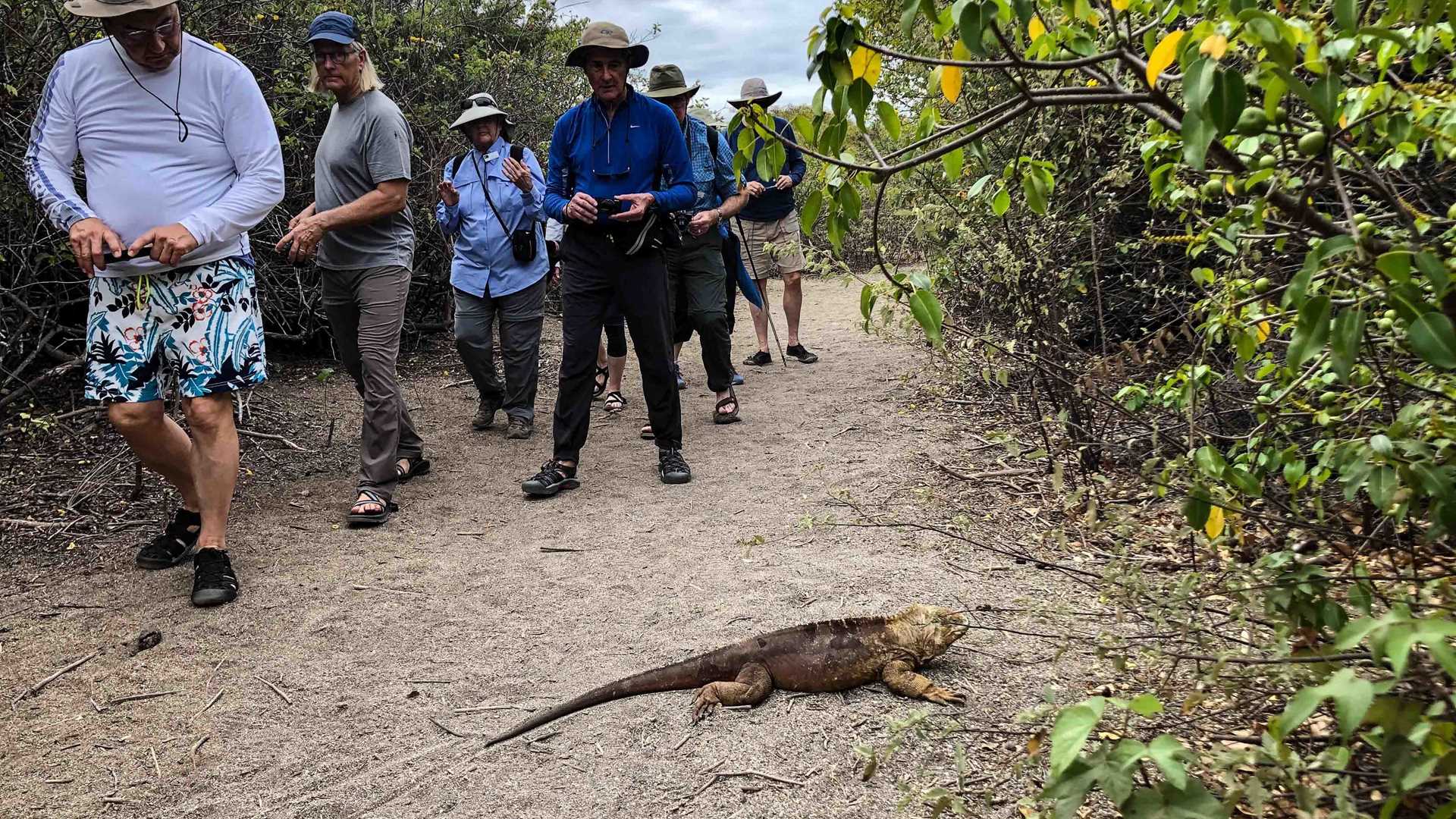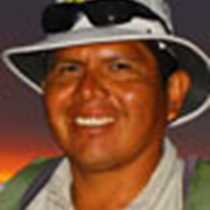The island of Isabela was formed after several volcanic eruptions in the last thousand years, into a seahorse-shaped island composed of five large volcanos and a small one, which forms the snout of the sea horse. It has been very active in the last years, geologically speaking. The last official eruption took place in June 2018, Sierra Negra Volcano on the northern coast, and lasted for couple of months.
This morning we disembarked at an uplifted area back in 1954 called Urbina Bay. This unusual site still shows evidence of being the ocean floor prior to the geological uplifting in 1954—large coral heads are still visible. We spotted some Alcedo land tortoises, as well as Galapagos land iguanas in the shade and picking up some flowers from the ground. Galapagos mockingbirds and Darwin’s finches also made appearances and came very close to our cameras.
After a tasty Ecuadorian buffet for lunch, we did some activities at Tagus Cove. This small U-shaped cove was a once refuge for pirates and whalers. It is still an historical site, featuring lots of graffiti left on the surrounding cliffs by these first visitors to the island. Today, any kind of painting is forbidden and punishable. The name Tagus was given in 1814 by a British navy ship of the same name, which came to hunt for tortoises.
We had a wonderful snorkeling outing in the clear surrounding waters, with Galapagos penguins, sea turtles feeding on seaweed, flightless cormorants fishing and some colorful fish. Some other guests went kayaking and paddle-boarding. At the end of the day, we had a nice walk to see Darwin’s lake and the surroundings.







